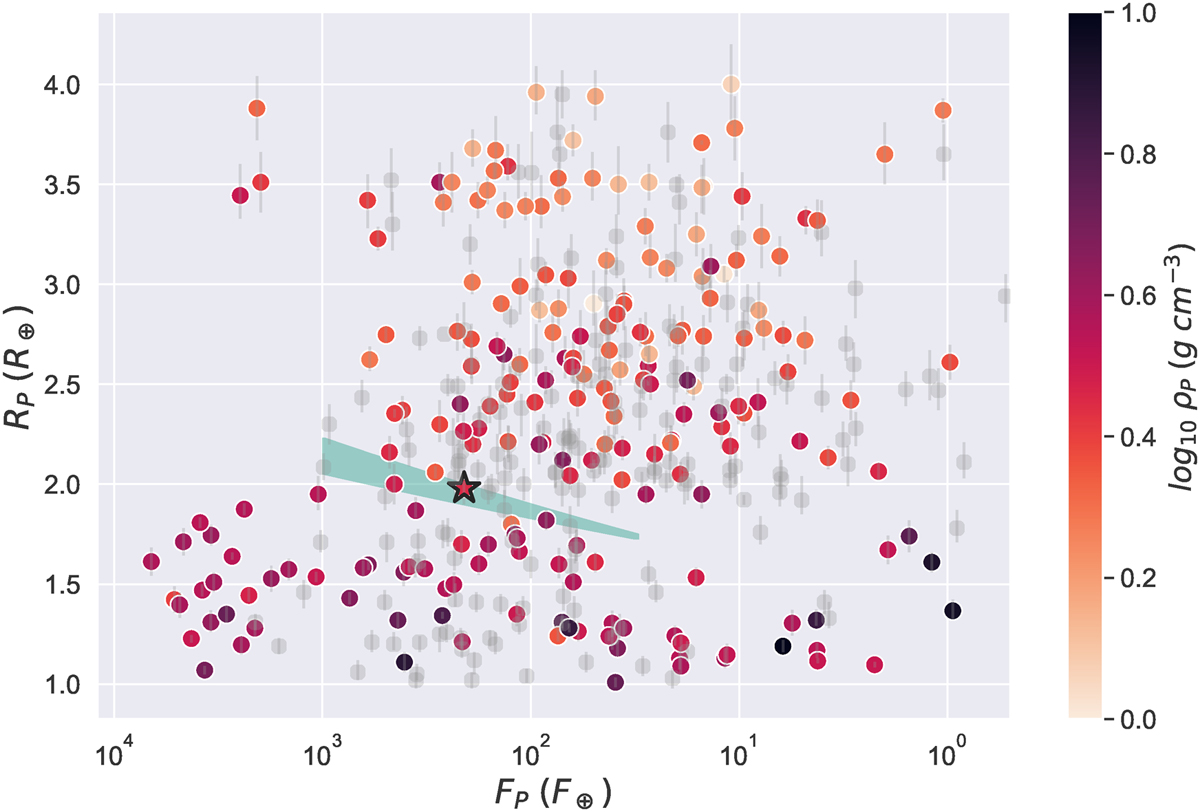Fig. 8

Download original image
Radius vs. incident flux (in units of flux received on Earth) for small planets (1 – 4 R⊕) orbiting stars 0.7–1.4 M⊙ and radius estimates with a precision better than 5%. All data were taken from the NASA Exoplanet Archive. Points in colour correspond to planets with density (and thus mass) estimates, where lighter and darker colours correspond to lower and higher densities, respectively. Grey points are planets whose masses have not been measured, and thus their densities are unknown. A fit to the radius valley following the relation in Petigura et al. (2022) is plotted in semi-transparent teal. TOI-733 b, marked with a black star, lies well within the sparsely populated region of the radius gap.
Current usage metrics show cumulative count of Article Views (full-text article views including HTML views, PDF and ePub downloads, according to the available data) and Abstracts Views on Vision4Press platform.
Data correspond to usage on the plateform after 2015. The current usage metrics is available 48-96 hours after online publication and is updated daily on week days.
Initial download of the metrics may take a while.


